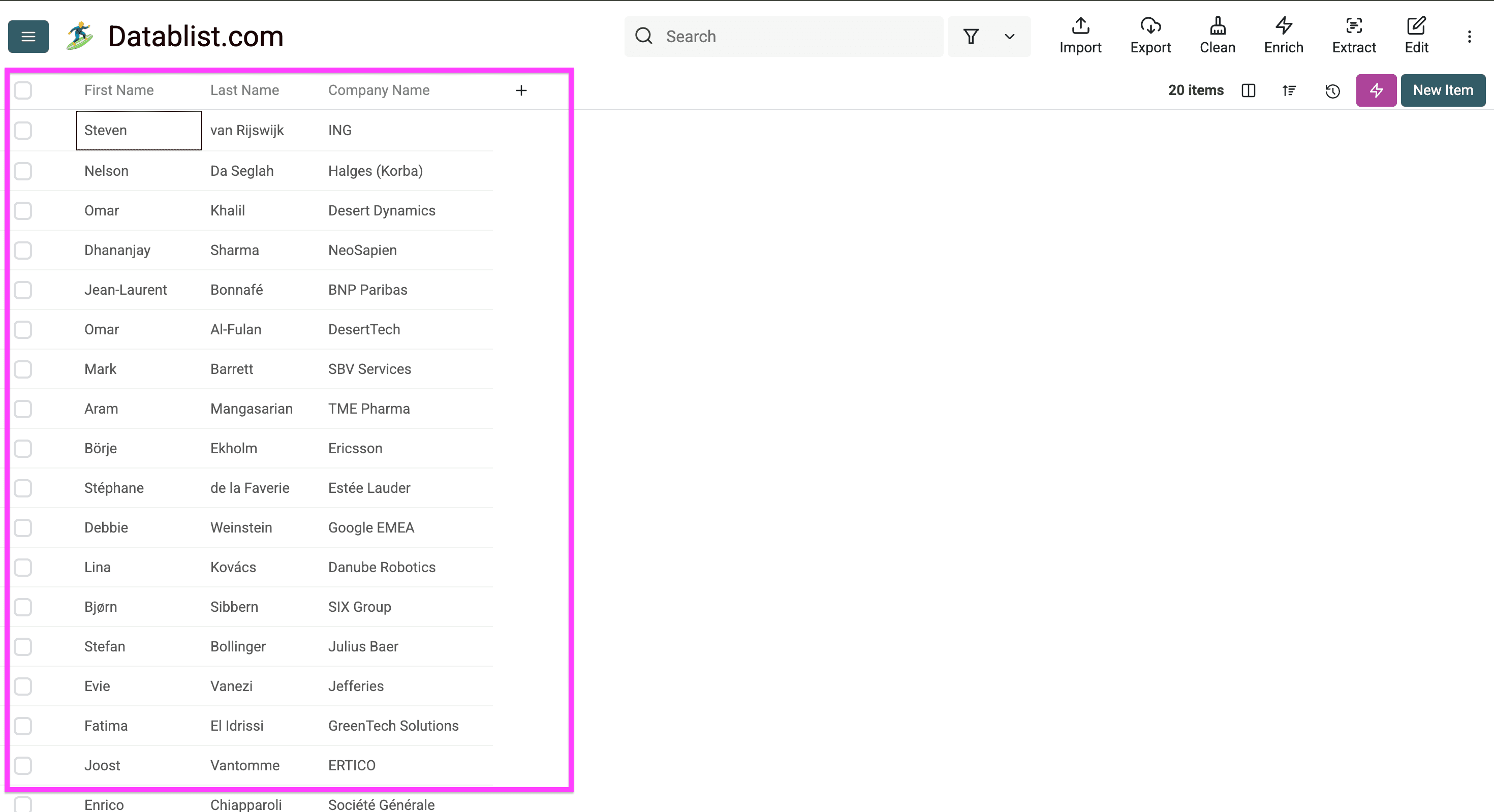Just imagine you have to do a Google Search for every row in a Excel file. And Copy/Pasting the Google Results in Excel in a specific format. Now imagine you want to do it for 50, 100, 500, or even more rows.
Boring, right?
It's not even boring, it's terrible — but whether you're a Founder, CEO, SDR, SEO or CRO, we all were at a point where we had to do it and we all felt the same doing it: bored.
If you don't like this — great! Because today, you'll discover how to automate Google Searches and save valuable time using an AI research agent.
What the AI research Agent can do:
- Find information from any website
- Get the latest news about people and their activities
- Discover up-to-date company information and updates
- Search and collect customer reviews
In other words: The AI research agent can automatically gather and process online information for any list of values — whether they're companies, people, or products. It runs Google searches on schedule or when needed.
Let's gooo!
Step 1 – Clarifying the Requirements
Let's talk first about what you'll need to run automated research on your Excel file:
- An Excel file containing values you want to automate your research on.
- An AI research assistant that can handle high volume.
- A prompt that works.
In this guide I'll focus on:
Finding mentions about EMEA executives in press articles from 2025.
To achieve this I'll use the AI Research Agent in Datablist.
📘 What is Datablist?
Datablist is an AI-Powered Spreadsheet allowing you to clean, enrich and manage your lists and automate workflow such as scaling research on excel files.
Step 2 – Importing List of Executives
Once you have your CSV/Excel file, sign up for Datablist.
Now import the list you want to automate research on into Datablist
Here's a list of the EMEA executives that I'll feed to the AI research agent to find press articles about and avoid repetitive research
Click on "Enrich" to start automating your repetitive research.
Select "AI" and then click on “AI Agent”.
Step 3 – Prompting the AI research Agent
Once you click on the AI agent, you can start writing your prompt to research at scale
Here's a quick breakdown of my prompt:
- Context about the data and the task
- I specified what I want the AI agent to search for
- I gave specified the output format I want
- I gave it data to work with
- I made clear that it should not give me any outputs other than those I demanded
- I used separators (
===) to have a better overview of my prompt and make it easier for the AI to understand
Learn here how to write prompts that always work.
Next, you can:
- Name the column/property where your AI research agent will insert the output.
- Put a description of your output in the second field.
In this example, I named my output property "Automated Research Results" and told it to use one of the pre-defined output formats. (see image below)
You can configure more if you click on the more icon, but for this example, I needed only one column.
You also have the option to use more advanced settings that allow you to specify:
- The AI model to run your automated research with.
- The maximum number of steps the AI research agent can take.
Once you're done with that, click on "Continue to output configuration".
Step 4 – Configuring the Outputs
You now have two options:
- Insert new columns (which is what I'll do)
- Link automated search results to an existing property by clicking on the icon in the middle and choosing one of the columns you want to link to (see picture below)
This is how it looks when you want to link the automated search results to existing columns
Click on the plus icon (+) in the middle to create the columns.
The results you will get from the AI research agent can be separated into three parts:
- The status column of the AI Agent — This is inserted by default to let you keep track of what's happening in your collection, reconfigure your AI research agent when needed, but will not be exported when you export your file.
- The search results — These include all outputs you want to have from the AI research agent.
- The confidence score — This tells you how high the quality of the output is. The higher, the better.
Click then on "Instant Run" to use the AI Research Agent on your Excel items
After a minute, you'll get your automated search results that will look like this:
Conclusion
Scaling research is possible if you use an AI research agent that can automate repetitive Google searches at scale and export the search results to an Excel or CSV file.
Frequently Asked Questions
Is it possible to scale research with Excel?
No, Excel add-ons are limited to working with data within the spreadsheet and cannot perform web searches or access external websites. For this kind of task you can use Datablist.com
What is an AI research agent?
An AI research agent is a software tool that can automatically search the internet, gather information, and organize data based on specific criteria you provide. It acts like a virtual research assistant that can work with large amounts of data. Datablist.com has one integrated
How can I automate Google searches?
You can automate Google searches using specialized tools and software that integrate with search engines. These tools can perform multiple searches simultaneously and collect data based on your specified parameters.
What's the difference between web scraping and AI research agents?
Web scraping tools simply extract data from websites based on predefined patterns, while AI research agents can understand context, analyze information, and provide relevant results based on natural language instructions.
How can I speed up my market research process?
Market research can be accelerated by using AI research tools that automate data collection, analyzing competitor information, and gathering market insights from multiple sources simultaneously.
What are the best tools for automating online research?
For automating online research, Datablist.com offers a powerful AI research agent that can process high volumes of searches quickly. This tool is specifically designed for automating Google searches at scale and organizing results in a spreadsheet format.













